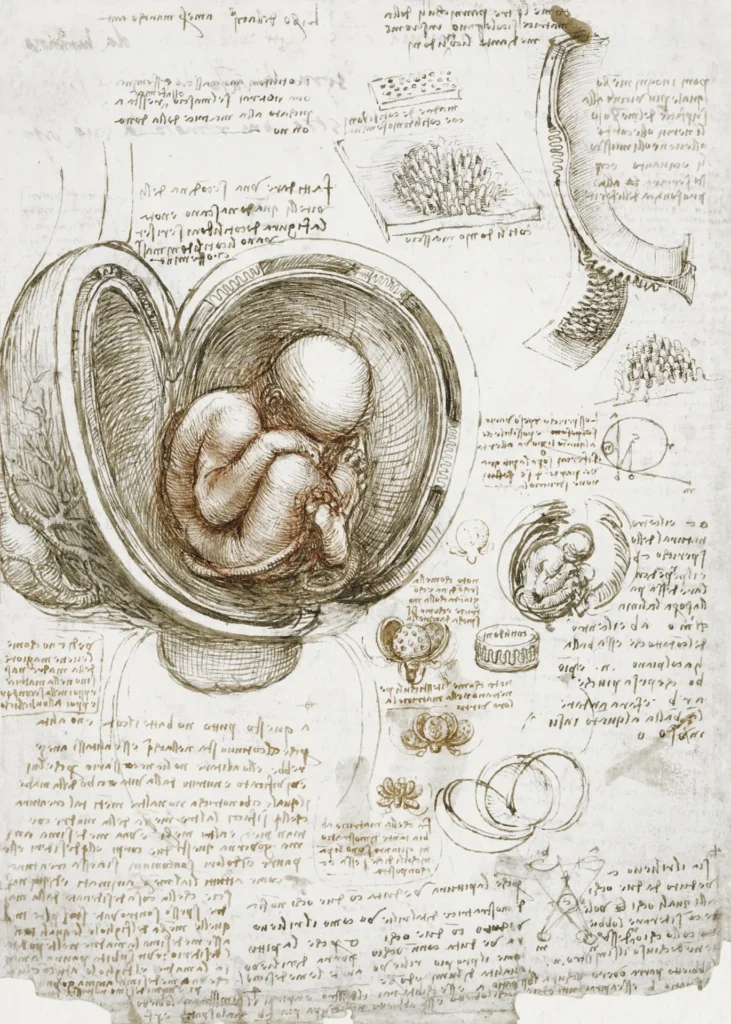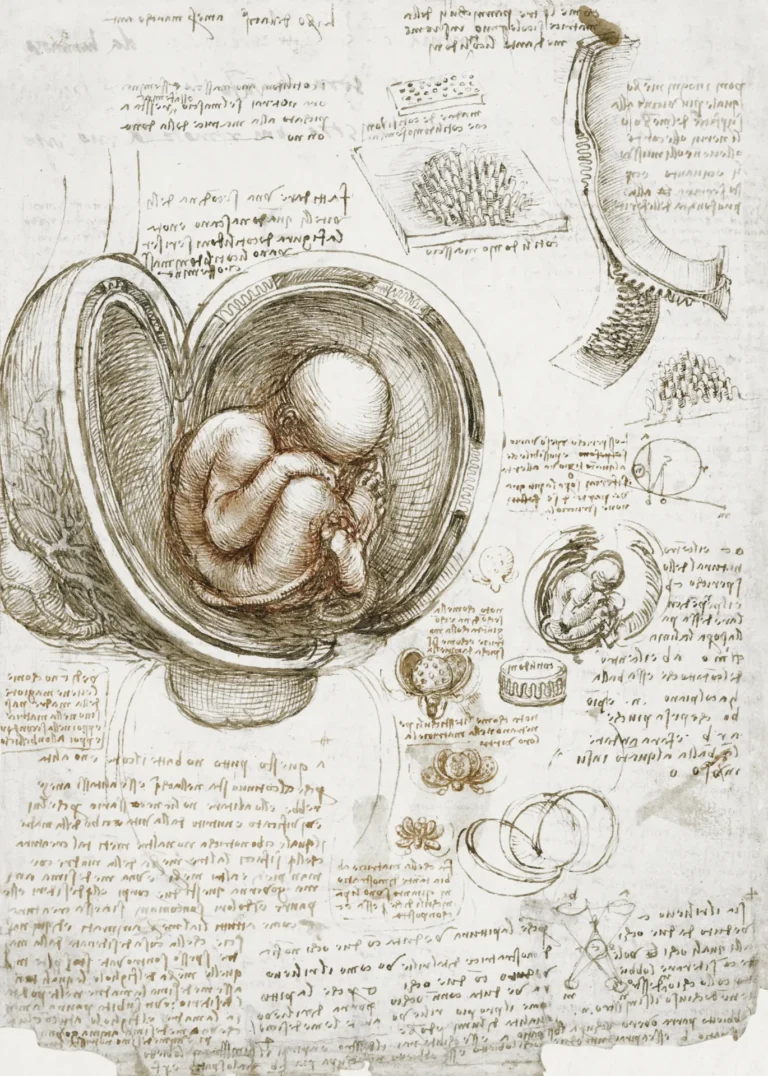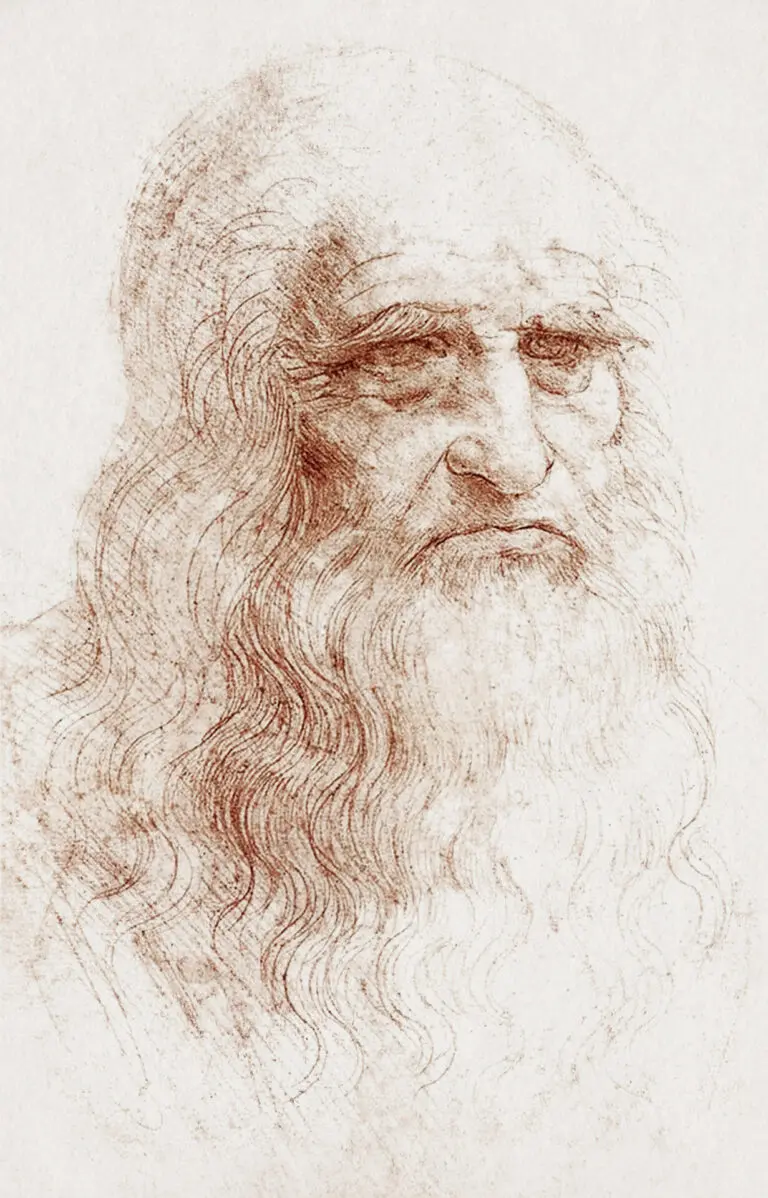Studies of the Fetus in the Womb (1510 -1513)
Leonardo da Vinci's Studies of the Fetus in the Womb is a remarkable series of anatomical drawings crafted between 1510 and 1513, showcasing his deep understanding of human embryology. Using black and red chalk, with pen and ink washes, da Vinci presented the fetus correctly positioned within the womb, disputing the contemporary belief of a multi-chamber uterus. His keen observations and artistic prowess not only celebrated the beauty of human life but opened the doors to modern anatomical science.
1510 - 1513
About the Artwork
Did You Know
Liked what you see? Add it to your collection.
Enjoyed reading? Share it.
... continued
The Studies of the Fetus in the Womb by Leonardo da Vinci, created between 1510 and 1512-1513, are a series of groundbreaking anatomical drawings that showcase his advanced understanding of human embryology and anatomy.
Key Features
- These drawings were executed using black and red chalk, with some pen and ink wash on paper. They are part of the third volume of Leonardo's private notebooks and are now held in the Royal Collection at Windsor Castle in England.
Anatomical Accuracy
- Leonardo da Vinci is credited with being the first person to accurately depict a human fetus in its correct position within the womb. He also correctly drew the uterine artery and the vascular system of the cervix and vagina. His drawings contradicted the prevailing theory of the time that the uterus had multiple chambers, instead depicting it as a single chamber.
Detailed Observations
- The drawings include detailed depictions of the umbilical cord and its role in nourishing the fetus. Leonardo believed that menstrual blood was passed to the fetus through the umbilical cord and illustrated the connection of the umbilical cord to the liver and the hepatic veins. He also observed and drew the position of the fetus's feet, noting that they blocked the urinary passage, leading him to theorize that the umbilical cord was responsible for exporting the fetus's urine outside the womb.
Artistic and Scientific Technique
- Leonardo used cross-sectional representations to show the layouts of veins, arteries, and nerves in greater detail. He often drew multiple views of the subject to provide a comprehensive study from various angles. His approach to drawing the human body was influenced by architectural techniques, viewing the body as an architectural masterpiece created by nature.
Legacy
- These drawings were never published during Leonardo's lifetime but were distributed after his death through his disciple Francesco Melzi and later his son Orazio. They remain significant not only for their artistic value but also for their contribution to the field of embryology and human anatomy.










